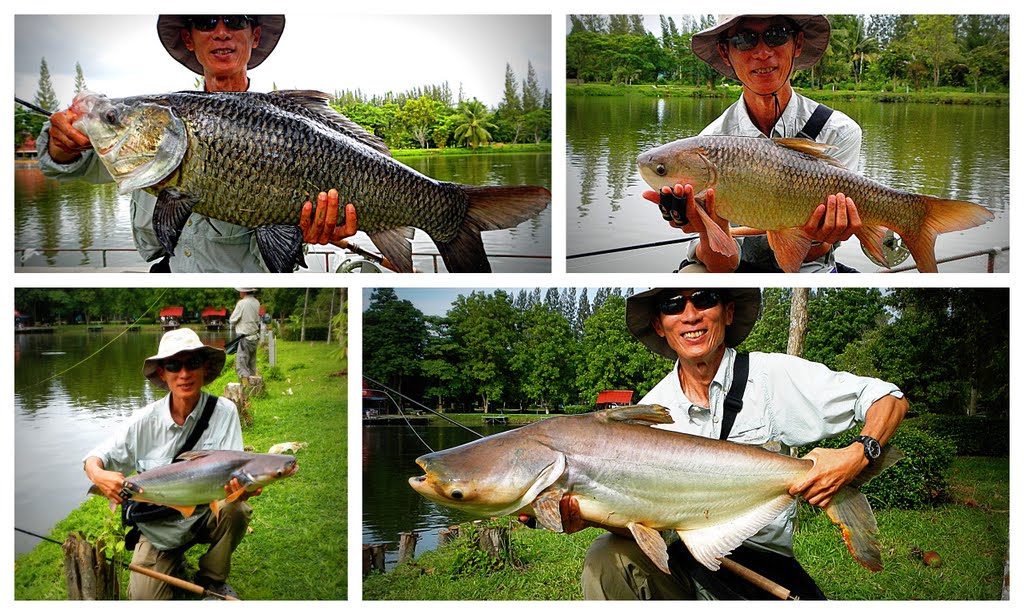On a recent trip to fish for jungle Perch (Sebarau) in the Malaysian jungle, I was advised by my good friend Nick to fish deep using fast sinking line casting split tail Clousers. And so a few weeks before the trip I dug out my old trusty BIIMx 6wt single hander, blew off the dust and started practicing to get back some form.
It has been a long while since I casted a single hander. Of late, I have been fishing exclusively with two hand rods and I thought it might be prudent to practice single hand casting before the trip. I paired the rod with a Albright XXT fast sink line and started zipping away. Before long it struck me.... single hand casting with fast sink line is just no fun. Unlike casting a floating or intermediate line, the finesse is not there. It's a chuck and duck affair.
My mind started drifting back to my double hand rod again. I kept thinking if only I could make fast sinking line work with a double hander. So I started tinkering ....set in my mind was this fast sinking Skagit head. Fast sink lines are notoriously hard to Spey cast because they stick to the water like glue and is hard to extract on the sweep. Undeterred, I chugged away with a formula in mind.
Digging through my old fly lines, I found an Albright XXT 350 grain 25ft shooting head (6-7 ips) that hardly see daylight. I knew 350 grain load my Sage ONE 4wt switch rod well and so that line gets to go under the knife. First, I snipped off the running line.... never quite like that sticky running line. Then to create an aggressive taper, I folded the rear 5ft of the body back to itself and secured the whole length with 50lb hollow core braid. That effectively shortened the head to 20 ft. Then to the front end, I attached a 7ips RIO 10ft versileader and the rear end loop-to-loop to my favorite running line.
As it turned out, this contraption way exceeded my expectation. I had 4 days of fishing from a boat chasing jungle Perch and this line roll cast like a champ. I was easily covering 80+ ft with roll cast and 100 ft cast with a Perry poke is easy. In fact I find that it roll cast farther than some of my Ambush line. Maybe because this fast sink line cuts through the wind like butter. The only adjustment I had to make when doing Perry poke is to do the speed poke. This photo below shows me casting from the front end of the boat.
The diagram below shows how I constructed the fast sink Skagit head from a 25 ft fast sink shooting line meant for single hander. Alternatively the folded segment can be secured by fusing/welding them together under heat and shrink tube. You can refer to the this Youtube video on how to do that.
Here is another good size jungle perch caught in Khao Sok, Thailand using fast sinking Skagit head.
**16 Jul 2015 update:
RIO has since come out with a RIO Scandi Body S4 that is fairly fast sinking. I have tested this line and it is good for both Skagit and Scandi casting. You can find my review of this line here <RIO Scandi S4 Review>




